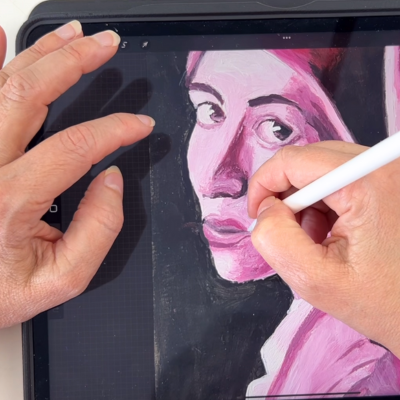How to Prevent Bleed-Through with Alcohol Markers
Alcohol markers are fantastic tools for achieving beautiful results across various styles, whether in portraits, scribbles, urban sketching, or landscapes.
However, one significant downside to alcohol markers is their tendency to bleed through paper, regardless of the quality or cost. This can be frustrating for artists who prefer to use both sides of the paper or those who dislike the reverse image that often appears. If you share this sentiment, I may have a solution for you.
Common Solutions to Bleed-Through
One way to address the bleed-through issue is by hiding the back of the paper with an opaque medium. Acrylic paint is a good option because of its opaqueness and ease of use.
Gesso is another alternative, though it often requires multiple layers to achieve the desired coverage.

In my urban sketching sketchbook, I prepared washes of acrylic paint on some pages to create an opaque layer. While this method isn’t perfect, it is viable, but dark spots can still bleed through. Another approach is using gouache, which works similarly to acrylic paint but may be less opaque.
For a more straightforward solution, consider using collage. Gluing another piece of paper over the back can effectively cover the bleed-through, providing a clean slate for your next drawing.

The Crescent Rendr Sketchbook: A Game Changer
Recently, I came across a TikTok video showcasing the Crescent Rendr sketchbook, which claims to have “no show-through” paper. Intrigued, I decided to give it a try. The sketchbook, available in A4 size and made in the USA, is praised for its thick, 180 GSM paper and soft cover. The paper is incredibly white, contrasting sharply with my usual sketching surfaces.
Testing with Alcohol Markers
I used my new Ohuhu markers to create a portrait to test its performance. Unlike regular drawing paper, the ink from alcohol markers sits on top of the Crescent Rendr paper, making blending more challenging unless the paper is saturated with ink. However, even with significant soaking, the ink did not bleed through, which was impressive.

Realistic portraits with alcohol markers
online course
Learn how to paint realistic portraits with alcohol markers
Trying Different Mediums
Curious about its versatility, I tested the sketchbook with various other mediums:
1. Acrylic Ink: These opaque inks performed well, with no bleed-through, even when using dark colors.
2. Dip Pen and Ink: I used a highly pigmented, waterproof ink that did not bleed, even when pressing hard with the nib.

3. Office Markers: Common office markers did not bleed through the paper either.
4. Watercolor: The paper held up reasonably well, though it was not designed for watercolor. The first layer of watercolor faded significantly, but the second layer achieved more intense colors. The paper did warp slightly, but this could be used creatively.
5. Sharpie Markers: Known for their tendency to bleed, Sharpies did not bleed through the Crescent Render paper, which was a pleasant surprise.
Conclusion: A Versatile Sketchbook
The Crescent Rendr sketchbook lived up to its promise of no bleed-through, making it ideal for alcohol markers and other mediums. From acrylic inks to Sharpies, this sketchbook handled everything without a hitch. While watercolor did cause some warping, it still allowed for exciting effects.
Overall, I’m thrilled with this sketchbook. It’s perfect for artists who use multiple mediums and want to avoid bleed-through. Other brands, such as Ohuhu, offer similar “no show-through” paper, which might be worth exploring.
With 64 pages (128 if you use both sides) in A4 size, filling this sketchbook will be a long-term project. I look forward to seeing how it holds up and will update you in a few years on its performance. Until then, happy sketching!
You can get your No-Bleed sketchbook here.







